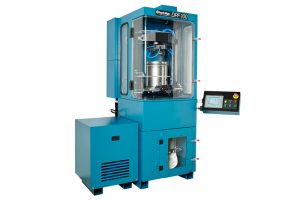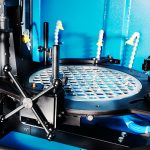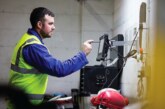This article, courtesy of Hartridge, looks at the commercial considerations that should be borne in mind when investing in DPF cleaning.
In a nutshell, the decision to invest in DPF cleaning is highly dependent on the number of filters that you can clean to make it commercially viable, and this somewhat depends on the kind of workshop you are running.
For workshops considering investing in DPF cleaning equipment – a market which is set to soar over the coming years – the decision is largely going to be driven by one of two scenarios, depending on the type of workshop.
The first scenario is investing for cost saving and is applicable to owned fleets maintained by in-house workshops. For this sector there are various drivers that may lead to a DPF cleaning machine being considered, such as increasing costs of DPF replacement and vehicle downtime as a result of DPF issues.
The determining factor is how much of the annual cost can be recovered through preventative on-site maintenance, and then it’s just a matter of calculating the payback for the investment. Additionally, there are benefits such as increased fuel efficiency and extended DPF service life to think about.
If you already outsource to a third-party provider then, depending on your fleet size, there are excellent savings to be made by switching to in-house. The decision is largely down to how fast you can recover the costs on the capital investment before you actually start saving money.
The second scenario is investing for revenue generation. If a workshop is asked to provide a routine on-site DPF cleaning service for a customer, then you have to make sure you can cover the investment with the incremental income you are forecasted to generate in a budgeted time period. These workshops have a great opportunity to establish their DPF business as early adopters and generate a great deal of profit.
Regardless of which type of workshop you are running, there are market forces at work which ultimately determine the speed of return on investment. It is of course still very early in the day for Europe and so the opportunity remains a future consideration for many. Even so, most fleets and workshops recognise that they need to have a DPF maintenance strategy in place.
You only have to look across the Atlantic to get an idea of what the market in the EU will be like in five to six years. In the USA, DPF preventative maintenance services are increasingly being offered by workshops as standard. The ‘wait until it needs it’ model, is no longer an approach that fits with fleet owners’ requirements. Such owners want to ensure their vehicles run optimally and that any variable that could cause an unplanned maintenance stop is removed.
Mark Dilks, Hartridge’s Marketing Director, gives this example:
“One customer in the USA bought a device for cleaning DPFs as he had customers on service contracts asking him to clean them. It did a reasonable job but his process involved a high risk of exposure to soot and ash, as well as requiring DPFs to be oven-baked on top of being cleaned.
“His maximum capacity was low, as baking takes a long time and the results are not always guaranteed, so he quickly hit a glass ceiling in terms of capacity. Once he installed our machine, he was soon cleaning 30 DPFs a week, generating an additional $4,500 per week”.









